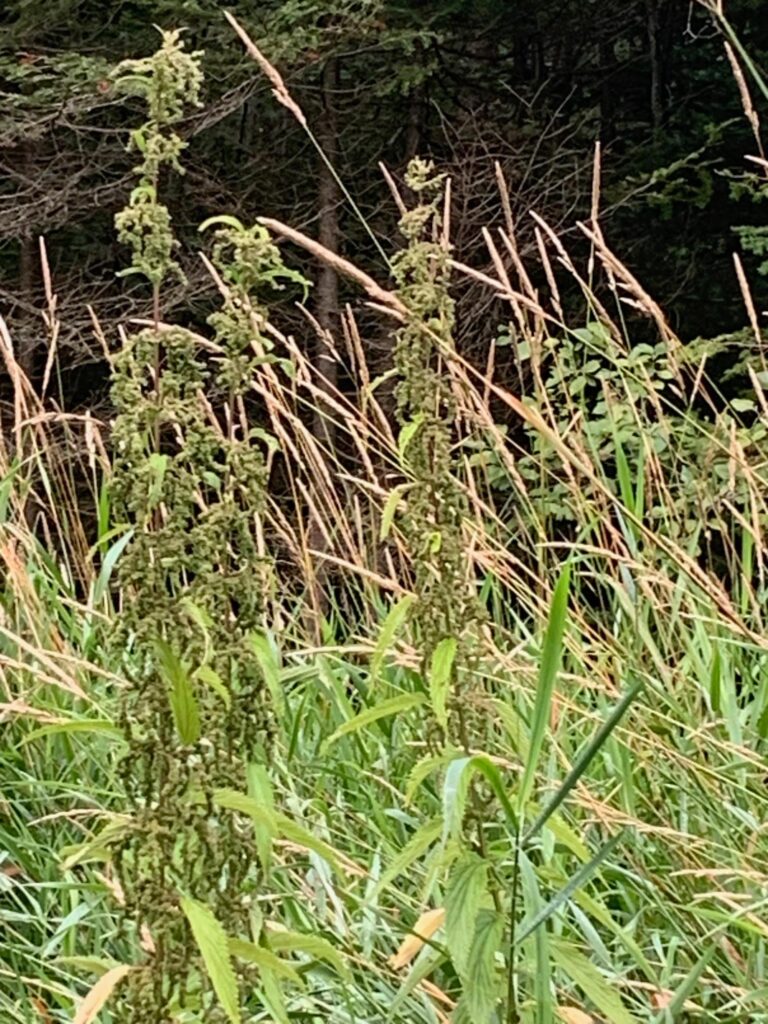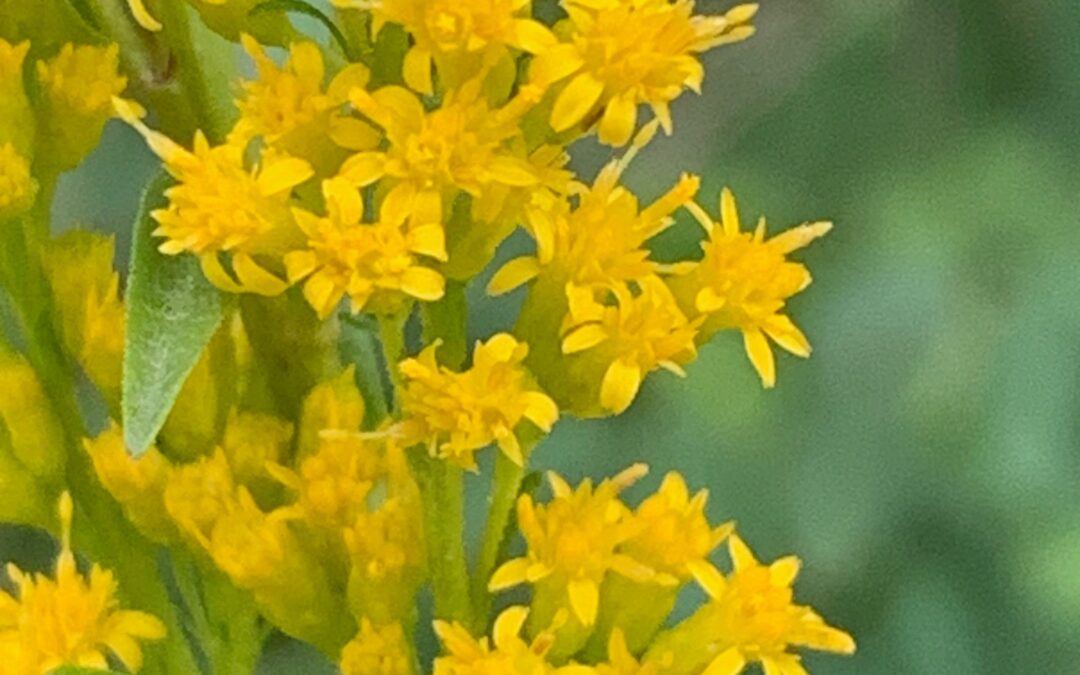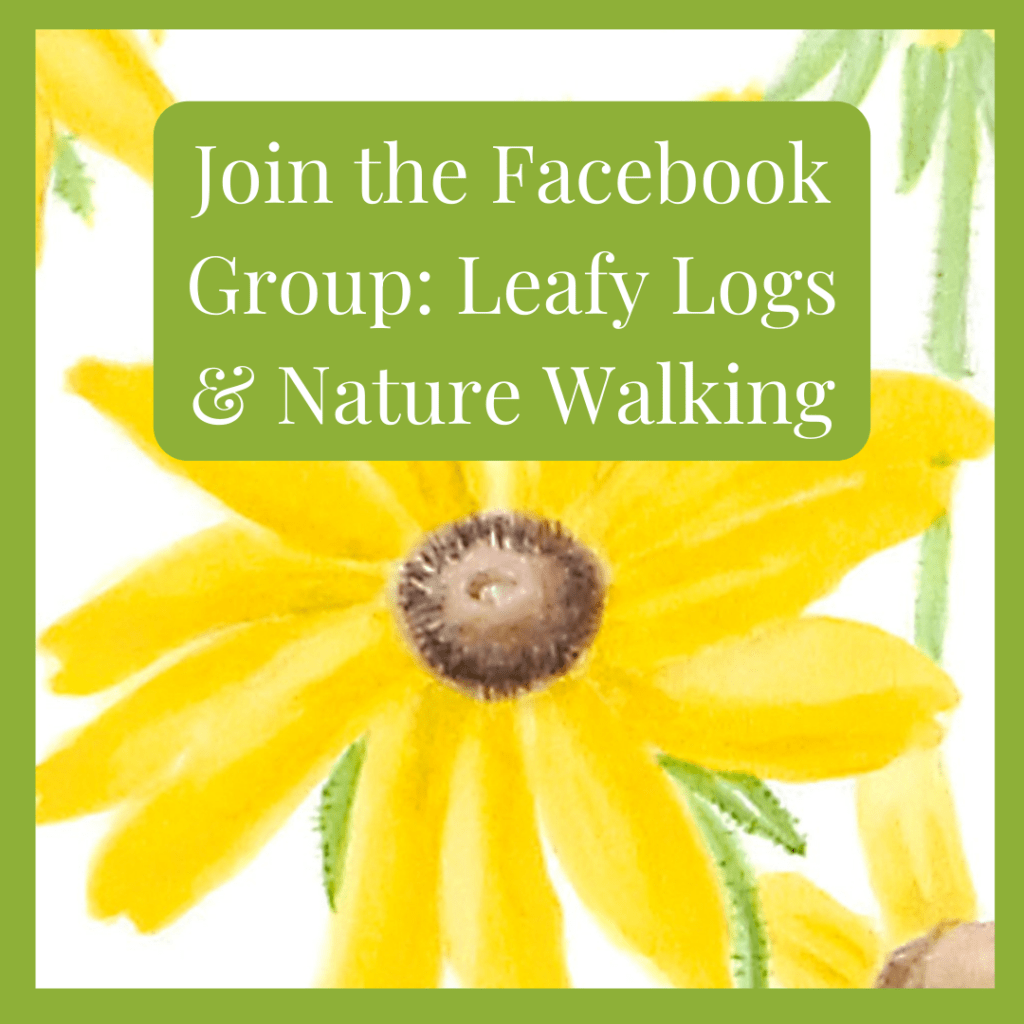It’s that time of year again. Goldenrod is everywhere along the roads, in the fields, popping up in gardens. It is a great pollinator plant. Butterflies and bees use goldenrod as a source of late summer pollen so they can spend the winter with full stomachs.
When I was a kid, goldenrod was blamed for breathing difficulties that resulted in the fall. During the autumn, that was what the doctors told moms when kids had breathing problems. But since that time, scientists have measured and photographed the pollen on goldenrod and found it to be heavy and sticky. How would heavy pollen float up to your nose?
Ragweed is another plant that creates pollen late in the summer. It sometimes even has a yellowish flower. It creates pollen that is light and drifts in the air. Usually it is a boring-looking plant and hides along the roadsides, with green leaves that don’t catch your attention. It originated in the Southwestern areas of the United States but has now spread worldwide.
The pollen of ragweed has lots of prickly points on it. They are microscopically small, but your nose certainly knows the difference. People who are allergic to ragweed pollen recognize it this time of year.

It is good to separate the two kinds of pollen and leave the goldenrod for the bees and butterflies. There are many kinds of goldenrod. Here in northern Wisconsin we have tall goldenrods such as Solidago altissima and Canadian goldenrod such as Solidago canadensis. I have been planting showy goldenrod (Solidago speciosa) in my garden to be able to enjoy that bright yellow joyful color. And I’ll be happy if the monarchs find it, too.
Ragweed has multiple players, even if they are dull and hide in the local weeds. It is confusing that the genus name of ragweed is Ambrosia. Common ragweed (Ambrosia artemisiifolia) has complicated fern-like leaves, but the one I found in our local ditch is giant ragweed (Ambrosia trifida). It has simple leaves. There is also a low growing ragweed with leaves that remind me of a thistle leaf called perennial ragweed (Ambrosia psilostachya).*
Whatever their names, these ragweeds have pollen that is prickly and catches the breeze. Your nose will recognize these Ambrosia species easily.
As far as I know the bees and butterflies do not like this pollen either. I have never seen them on a ragweed plant. But now I am curious and wonder if there are other insects that may not find prickly a bad thing and may feed on Ambrosia pollen. Perhaps there are insects we don’t know who like ragweed.
So keep growing the goldenrod and dig up the ragweed. We all love the butterflies.
*I have used my favorite wildflower book for this area for my references on goldenrod and ragweed. Black, Merel R. and Emmet J. Judiewicz, Wildflowers of Wisconsin and the Great Lakes Region, University of Wisconsin Press, 2009.


